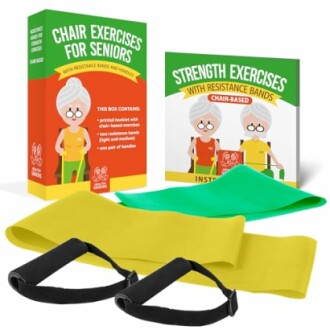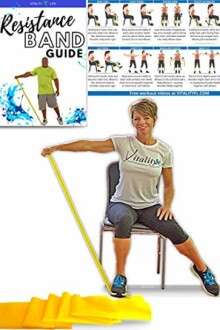
Using Resistance Bands Safely: Tips for Seniors
Key Takeaways
- Start with low resistance bands to avoid strain.
- Incorporate warm-up and cool-down exercises.
- Use correct form and posture during workouts.
- Prioritize safety and listen to your body.
- Consult with a healthcare professional before starting any new exercise routine.
Resistance bands are excellent tools for seniors looking to strengthen their muscles and improve flexibility. However, safety is crucial when incorporating these bands into your exercise routine. This article provides essential tips to help seniors use resistance bands safely and effectively.
Why Use Resistance Bands?
Resistance bands offer many advantages for seniors, including:
- Low-impact exercises that reduce the risk of injury.
- Portability for at-home workouts.
- Versatility for a variety of exercises targeting different muscle groups.
Choosing the Right Resistance Band
Before using resistance bands, it’s essential to select the right type based on your current fitness levels and comfort. Here are some options:
| Resistance Band Type | Suggested Use | Features |
|---|---|---|
| Light Resistance Bands | Beginner exercises | Ideal for seniors starting a fitness journey |
| Medium Resistance Bands | Intermediate workouts | Good for building muscle strength |
| Heavy Resistance Bands | Advanced exercises | For seasoned users focused on strength training |
Safety Tips for Using Resistance Bands
Here are some crucial tips to ensure safe and effective workouts:
- Start Slow: Always start with lighter resistance bands. Gradually increase resistance as your strength improves.
- Warm Up: Perform a gentle warm-up before starting your workout. This could include light stretching or walking.
- Proper Usage: Follow the instructions provided with the bands. Make sure you use them as intended to reduce the risk of injury.
- Maintain Good Posture: Keep your back straight and avoid any twisting motions. This helps prevent unnecessary strain on your back.
- Control Movements: Avoid abrupt or jerking motions; instead, perform controlled, smooth movements when using the bands.
- Listen to Your Body: If you feel any pain or discomfort, stop exercising immediately. Consult your healthcare provider if necessary.
Recommended Resistance Bands
Chair Exercises for Seniors
This set includes resistance bands with handles and a printed exercise guide, perfect for beginners aiming to enhance strength safely.
More DetailsIncorporating Resistance Bands into Workouts
You can integrate resistance bands into various exercises. Here are some examples:
- Arm curls: Stand on the band and curl your arms upward.
- Leg lifts: Secure the band to your feet and lift your legs against the band's resistance.
- Seated rows: Sit with your legs extended, wrap the band around your feet, and pull towards you.
For a comprehensive guide on how to perform these exercises safely, consider checking out our guide on strength training for joint health.
Another Recommended Resistance Band
Resistance Band for Seniors
This band offers light resistance and longer length, tailored for safe use during exercises at home.
See ProductWhen to Consult a Professional
If you are unsure of how to begin or have specific health concerns, consider consulting with a healthcare provider or physical therapist before starting any resistance training. You can find important advice on safety tips for senior strength training that may also be helpful.
Conclusion
Incorporating resistance bands into your exercise routine can strengthen muscles and enhance overall fitness when done safely. Remember to start with the appropriate resistance, pay attention to your body, and consult professionals as needed. Your journey to improved strength and wellness can be a safe and enjoyable experience!

